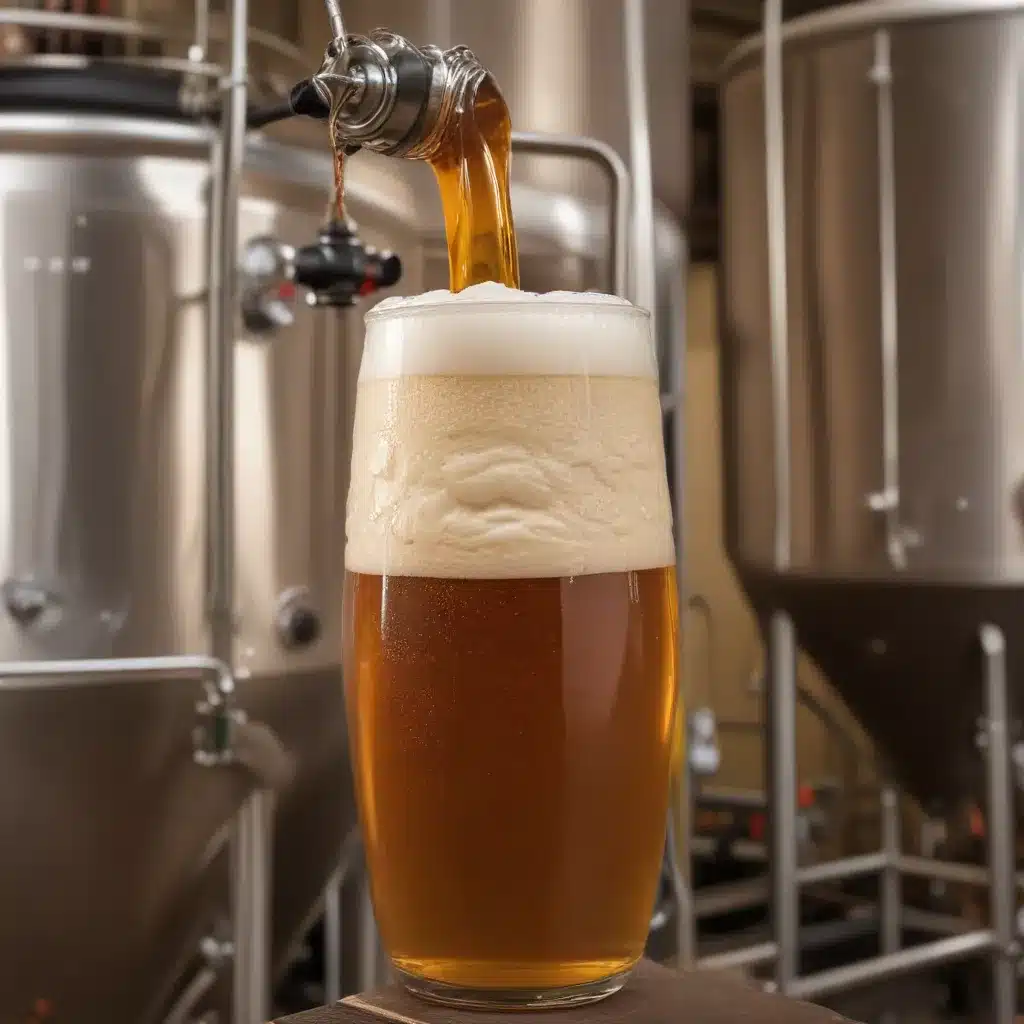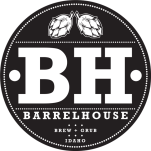
Mastering the Art of Mash Temperature for Exceptional Brews
As an experienced chef and barbecue expert, I’ve had the pleasure of working at the BarrelHouse Pub & Grill, where we take great pride in offering our patrons a truly remarkable dining experience. From our perfectly smoked meats to our meticulously curated craft beer selection, every aspect of the BarrelHouse experience is designed to delight the senses and satisfy the palates of food and beer enthusiasts alike.
At the heart of our culinary and beverage operations lies a deep understanding of the science behind mashing, the crucial process that transforms raw grains into the fermentable sugars that give beer its unique character. Today, I want to share with you some of the insights I’ve gained from my time at the BarrelHouse, exploring the intricate relationship between mash temperature and the flavor, body, and drinkability of our craft brews.
You see, the temperature at which we mash our grains is not just a number on a thermometer – it’s the key that unlocks the full potential of our carefully selected malts, hops, and yeast. By carefully controlling the mash temperature, we’re able to manipulate the enzymatic activity and sugar conversion rates, ultimately shaping the final profile of our beers.
The Enzyme Tango: Balancing Alpha and Beta Amylase
At the core of the mashing process are two primary enzymes – alpha-amylase and beta-amylase – that work in tandem to break down complex starches into fermentable sugars. The temperature at which we mash our grains directly influences the activity of these enzymes, and understanding their role is crucial.
Alpha-amylase, which thrives at higher temperatures around 150-160°F (65-71°C), is responsible for breaking down starches into longer chains of sugars, including maltose. This enzyme is a key contributor to the body and sweetness of the final beer. On the other hand, beta-amylase, which performs best at lower temperatures around 140-150°F (60-65°C), breaks down those longer sugar chains into simpler sugars like glucose, resulting in a more fermentable wort and a drier, crisper beer.
By carefully balancing the activity of these two enzymes through precise temperature control, we’re able to fine-tune the sugar profile of our worts, ultimately shaping the overall character of the beer. A lower mash temperature, for example, will favor beta-amylase and produce a more attenuated, dry beer, while a higher mash temperature will give alpha-amylase the upper hand, resulting in a beer with more residual sweetness and a fuller mouthfeel.
The Grain Affair: Selecting the Right Malts for the Job
Of course, the mash temperature isn’t the only factor at play – the grains we use in our recipes also play a vital role in determining the final outcome. At the BarrelHouse, we take great pride in our malt selection, carefully choosing from a diverse array of grains to create truly unique and flavorful beers.
Barley, the workhorse of the brewing world, provides a solid malt backbone, contributing to the color, body, and sweetness of our beers. Wheat, on the other hand, lends a silky smooth mouthfeel and enhances head retention, while rye brings a spicy and earthy character that adds complexity to our brews. And let’s not forget about oats, with their creamy, velvety texture that helps to create a luxurious mouthfeel.
By blending and balancing these different grains, we’re able to craft beers that not only tantalize the taste buds but also offer a truly engaging sensory experience. Whether we’re crafting a crisp and refreshing lager or a robust and malty stout, the selection of our grains is a critical component in our pursuit of brewing excellence.
Temperature Tuning: The Key to Unlocking Flavor
Now, let’s dive a little deeper into the role of temperature in the mashing process. As I mentioned, the range of 148-158°F (64-70°C) is generally considered the sweet spot for mashing, as it allows for the optimal activity of both alpha-amylase and beta-amylase. But the specific temperature we choose can have a profound impact on the final characteristics of our beers.
At the lower end of that range, around 148°F (64°C), beta-amylase takes the lead, resulting in a more fermentable wort and a drier, crisper beer. This is a great approach for styles like IPAs and pale ales, where we want a clean, attenuated finish that allows the hop character to shine.
On the other hand, when we mash at the higher end of the spectrum, around 158°F (70°C), alpha-amylase becomes more dominant, producing a mix of fermentable and unfermentable sugars. This leads to a beer with more body, fuller mouthfeel, and a touch of residual sweetness – perfect for styles like stouts, porters, and bocks, where we want a rich, velvety texture to balance the roasted and malty flavors.
Of course, it’s not just about the target temperature – maintaining a consistent and stable mash temperature is also crucial. Fluctuations in temperature can lead to uneven enzymatic activity and incomplete sugar conversion, which can result in off-flavors and inconsistent results. That’s why at the BarrelHouse, we invest in state-of-the-art brewing equipment and employ meticulous temperature monitoring and control techniques to ensure that our mash temperatures remain rock-solid throughout the entire process.
The Science of Time: How Duration Shapes the Brew
But temperature is not the only factor that influences the mashing process – the duration of the mash is also a critical consideration. The ideal mashing time typically ranges from 60 to 90 minutes, allowing the enzymes ample opportunity to work their magic and fully convert the starches into fermentable sugars.
During this time, the alpha-amylase and beta-amylase enzymes get to work, gradually breaking down the complex carbohydrates and unlocking a diverse array of sugars. The longer the mash, the more time these enzymes have to work, resulting in a higher overall sugar yield and a more fermentable wort.
However, it’s not just about sugar conversion – the mashing duration also plays a role in the development of body and mouthfeel. As the mash progresses, proteins and other compounds are released from the grains, contributing to the overall texture and viscosity of the final beer. By allowing the mash to run its full course, we can ensure that these essential components are fully extracted and integrated into the wort, resulting in a beer with a rich, satisfying mouthfeel.
Of course, there’s a delicate balance to strike – too short of a mash can lead to incomplete sugar extraction, resulting in a less fermentable wort and a beer that falls flat on the palate. On the other hand, extending the mash beyond the recommended range can result in over-extraction, leading to a beer that’s overly dry and lacking in complexity.
Putting it All Together: Crafting the Perfect Brew
At the BarrelHouse Pub & Grill, we’ve honed our mashing techniques to a fine art, meticulously balancing temperature and time to create beers that truly stand out from the crowd. Whether we’re brewing a crisp and refreshing lager or a robust and complex stout, we approach each batch with the same level of care and attention to detail.
For our lighter, more hop-forward styles, we often opt for a lower mash temperature, around 148-152°F (64-67°C), to favor the activity of beta-amylase and produce a more attenuated, drier beer. This allows the vibrant hop aromas and flavors to shine, without being overshadowed by residual sweetness.
On the other hand, for our malt-focused beers, like our award-winning Barrel-Aged Imperial Stout, we’ll mash at the higher end of the spectrum, around 156-160°F (69-71°C). This gives alpha-amylase the upper hand, resulting in a beer with a rich, velvety mouthfeel and a touch of residual sweetness that perfectly complements the complex roasted and chocolatey notes.
But it’s not just about the mash temperature – we also carefully consider the duration of the mash, adjusting it based on the specific grain bill and the desired characteristics of the beer. For our lighter styles, we typically opt for a 60-minute mash, while our more substantial offerings may benefit from a longer, 90-minute mash to ensure complete sugar conversion and optimal body development.
Throughout this process, we’re constantly monitoring and adjusting the parameters, using a range of high-tech brewing equipment to ensure that every batch is as consistent and true-to-style as the last. From our precision temperature controllers to our advanced wort recirculation systems, we leave no stone unturned in our pursuit of brewing perfection.
Craft Beer Pairings: Unlocking Flavor Synergies
Of course, all of this attention to detail in the brewing process would be for naught if we didn’t have a equally impressive selection of craft beers to pair with our mouthwatering barbecue offerings. At the BarrelHouse, we’ve curated an extensive collection of brews that complement our smoked meats and hearty sides to perfection.
For our tender, fall-off-the-bone ribs, we often recommend pairing them with a crisp, refreshing lager like our BarrelHouse Pilsner. The clean, slightly hoppy profile of the beer cuts through the richness of the meat, while the carbonation helps to cleanse the palate, preparing it for the next delectable bite.
On the other hand, our Barrel-Aged Imperial Stout, with its deep, roasted notes and velvety mouthfeel, is the perfect companion for our decadent smoked brisket. The robust, malt-forward character of the beer echoes the complex flavors of the meat, creating a harmonious dining experience that’s sure to delight the senses.
And let’s not forget about our craft IPAs and pale ales, which pair beautifully with our house-smoked chicken wings. The citrusy, resinous hop aromas and flavors cut through the crispy skin and succulent meat, providing a refreshing counterpoint that keeps you coming back for more.
Elevating the Dining Experience
At the BarrelHouse Pub & Grill, we’re not just in the business of serving up delicious food and drinks – we’re committed to creating a truly unforgettable dining experience for our patrons. From our meticulously crafted barbecue to our expertly curated craft beer selection, every aspect of our establishment is designed to delight and engage the senses.
As you step through our doors, you’re immediately enveloped in the tantalizing aroma of slow-smoked meats, the gentle hum of lively conversation, and the inviting glow of our cozy, industrial-chic ambiance. Our dedicated team of bartenders and servers are passionate about their craft, ready to guide you through our menu and offer expert recommendations on beer pairings that will elevate your meal to new heights.
But the real magic happens in our open-concept kitchen, where our skilled pitmaster and their team of culinary alchemists work tirelessly to perfect the art of barbecue. Using only the finest, locally sourced ingredients and the most advanced smoking techniques, they transform humble cuts of meat into mouthwatering masterpieces, each bite infused with the smoky, savory essence that has made BarrelHouse a beloved destination for food and beer enthusiasts alike.
And let’s not forget about our craft beer selection, which is truly a sight to behold. With a rotating lineup of carefully curated brews from both local and regional purveyors, we offer an unparalleled variety of styles and flavor profiles to satisfy even the most discerning palate. Whether you’re in the mood for a crisp, refreshing lager or a bold, complex stout, our knowledgeable bartenders are always on hand to guide you through our extensive selection and help you find the perfect pairing for your meal.
So, the next time you find yourself in Garden City and in the mood for a truly exceptional dining experience, be sure to make your way to the BarrelHouse Pub & Grill. With our commitment to quality, our passion for innovation, and our deep respect for the craft of brewing and barbecue, we’re confident that you’ll leave our establishment with a renewed appreciation for the art of crafting the perfect pint and the perfect plate.


